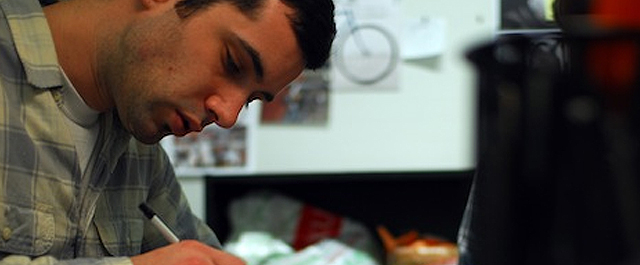Teach Less, Integrate More by Paul Backett
A lot of recent discussion about design education argues for expanding the design student’s skill set. Many of today’s Industrial Design programs ask their students to be social scientists, technologists, business analysts and brand strategists—just about everything. The reality is, most of these skills are best learned through experience on the job, and the traditional ID skill set still makes for the best foundation: framing the problem, exploring ideas, making prototypes and storytelling.
What’s far more important, and more neglected, is that students learn to properly integrate the skills that they do learn. It’s not enough to know how to sketch, model or do user research; these skills must connect to each other, in every project the student undertakes. Used correctly, they enable us to find the solutions and tell the stories that ensure their success. But by expanding the list of “capabilities” students have, many schools are sacrificing the most important capability of all: to approach a design problem with tools that work together seamlessly.
And this has had serious negative consequences. In the 11 years I have worked as a designer, I have seen a deterioration of the core skills of design—the essential craft of what we do. When I left school in 2000, CAD and digital rendering were simply tools at our disposal. Since then they have become so powerful and so easy that they tempt students to skip over the fundamentals of the design process. It’s far easier today to jump into CAD and deliver a glossy rendering that disguises lazy design work. This simply wasn’t possible in the past.
So what should design schools teach? Or, more important, what should design students make sure they learn? Trends in the design field shift and evolve with incredible speed, and while schools have an obligation to stay current, they do their students a disservice when they completely overhaul their program to reflect the current vogue. The best prepared students still have a few basic skills, but use them with familiarity and fluency:
1. Research – Great designers are great empathizers. Design schools need to teach the difficult skill of taking on the perspective of someone completely unfamiliar, and incorporating that perspective into a design. Instead, we’re content to let students design with themselves as the target user.2. Sketching – The ability to rapidly express ideas using sketching is essential; it’s also the indispensable exploration and development tool. But most schools are teaching pure visual expression. They aren’t teaching students to think while they sketch, or to infuse their sketching with research-driven insight. As it stands, design students are mostly sketching without purpose.
3. Prototyping – Comfort with 3D representation as a sketching tool as well as a way of understanding form and construction. If you can build it, you’re halfway to knowing how it’s manufactured. But over-reliance on increasingly accessible digital modeling means we’re having students jump to 3D before they understand form and construction.
4. Collaboration – Students are graded individually and therefore have to travel the design process on their own. This never happens in the professional world. Learning the skills of teamwork is essential, but under-emphasized in most design programs. We’re letting students become lone wolves.
5. Presentation – A good design that’s poorly presented is dead. Students should graduate with dozens or hundreds of presentations under their belts, both designer- and client-oriented. Both internally and externally, we’re not demanding good enough stories.
More than just helping students through their academic careers, these skills remain the basis of what we do everyday in the professional world. Design is a constantly changing field, with new practices constantly appearing and evolving. Students need to understand how these changes will affect them, but I firmly believe that the best way to really learn them is in practice, in the real world, from real experts.
A solid, integrated approach to the design process is the least we should be providing our students by the time they graduate. Over the next five posts I’ll try to outline those basics and explain how they can be taught in a way that’s not just useful in professional practice, but integrated with each other, to give students the flexibility to adjust to an uncertain future.
About Paul Backett
Paul leads industrial design teams at Ziba on a variety of strategic and tactical design programs ranging from medical devices to consumer electronics, apparel and footwear. He is responsible for the design intent for all industrial design products, and a mentor to the Ziba ID team. His diverse experience, coupled with the desire to immerse himself fully in the target consumers’ world, has helped Paul deliver innovative brand building solutions for clients such as Nike, P&G, Respironics and Dell. Paul enjoys uncovering solutions to problems of all sizes and particularly finds the prototyping process to be an inherently rewarding part of the design process.
Prior to joining Ziba, Paul was a designer at Seymour Powell in London, where he was involved in programs for Nokia, Unilever, and Mission Speakers. Paul is a native of Edinburgh, Scotland; and holds a First Class Honors degree in Product Design from the Glasgow School of Art.


